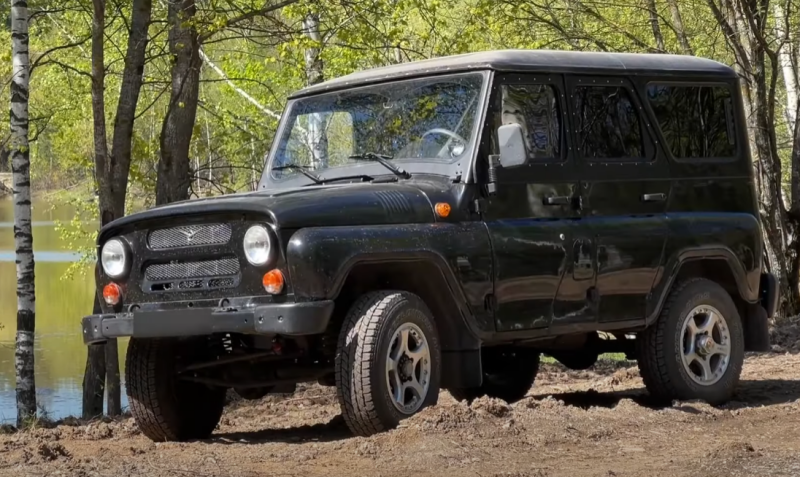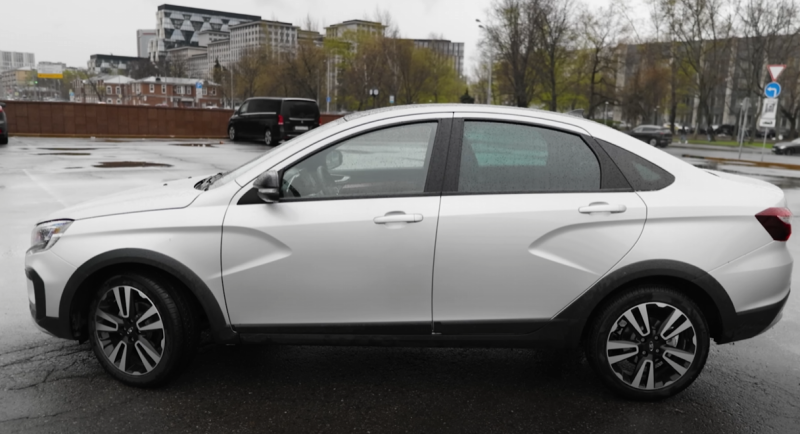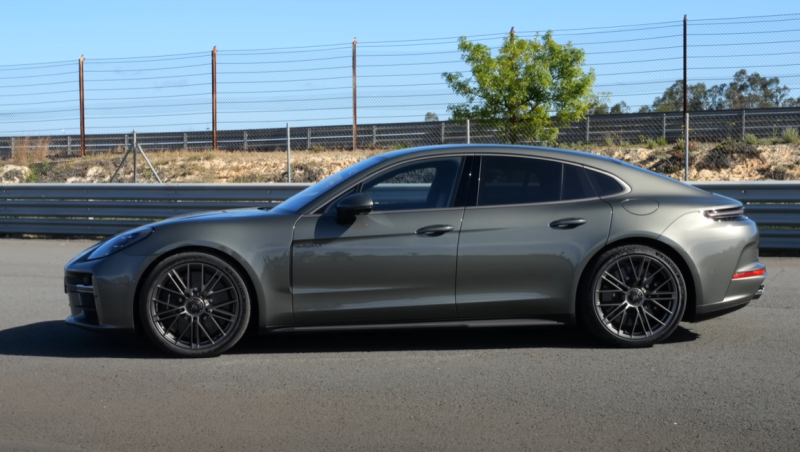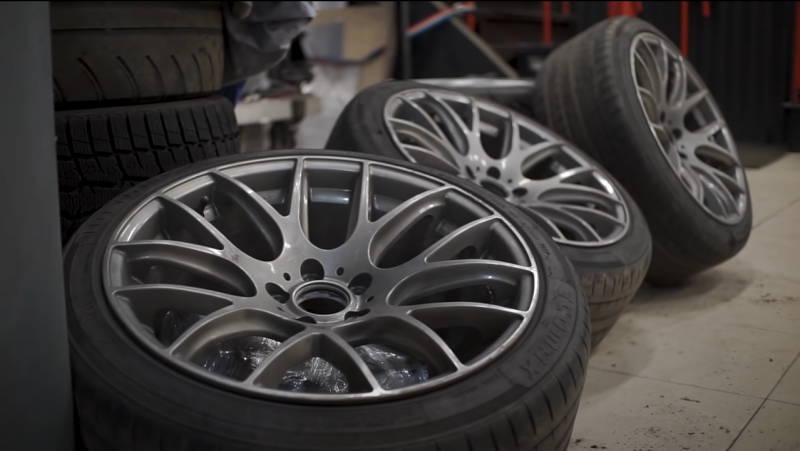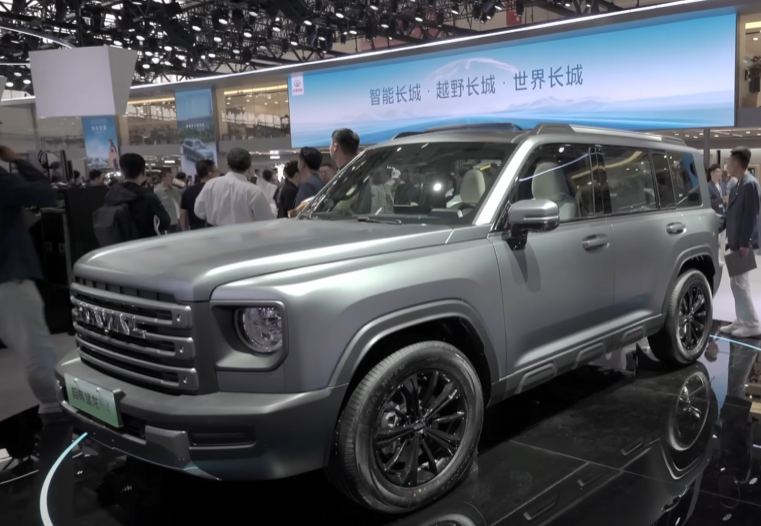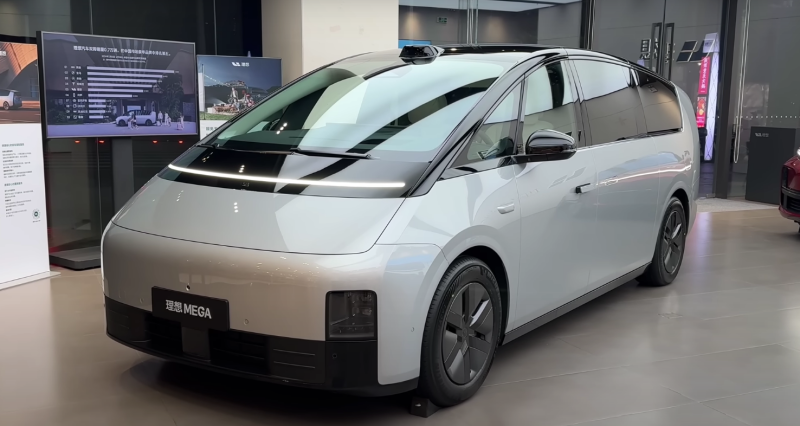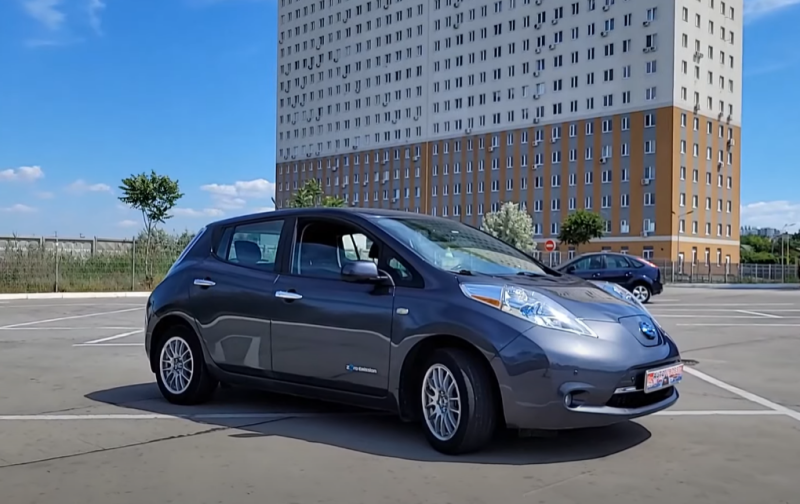Less than three years later, a pair of prototypes was built at a mechanical experimental plant in the capital (MEMZ). The car was unified with the existing production cars “to the fullest”: only the transfer case, tires and frame were original.
Two "twin brothers"
Having at our disposal a couple of prototypes, we decided to experiment. One of them was “shod” in Y-186 arched tires and assigned the index “NAMI-0127A”.
 Tractor with arched tires. Archival photo.
Tractor with arched tires. Archival photo.The second tractor received pneumatic tires (rollers) Ya-194. The car was called "NAMI-0127P".
 NAMI on pneumatic rollers. Archival photo.
NAMI on pneumatic rollers. Archival photo.Arched tires - tires with a transverse profile in the form of an arc.
But the main feature of the 12X8 car with all eight wheels is the articulated frame. This simplifies the design of the undercarriage, due to the absence of bridges with angular velocity joints for turns.
 Maneuvering was carried out using an articulated frame, like the T-150. Archival photo.
Maneuvering was carried out using an articulated frame, like the T-150. Archival photo.A pair of balancing carts, like other units, the details are borrowed from the Ural-375D. The power unit is an eight-cylinder YaMZ-238, which developed 238-240 "horses".
Test
At the initial stages, cars were equipped with cargo platforms of various types. Here, without dissolution trailers, for example, they found out the turning radius. For NAMI-0127 with pneumatic rollers, this parameter turned out to be 10,24 m. Compared to the already produced KrAZ-255B and Ural-275D, the Moscow machine had obvious advantages: the turning radius turned out to be 3,26 and 0,26 m less, respectively.
On the road
The next check took place on the highway from the capital to Gorky. The passage of a road train weighing 50 tons without stops was envisaged. The designers had a fear that the trailer would "wobble" when maneuvering when the sections of the truck began to fold. A distance of 520 km was covered at an average speed of 37,6 km/h. It could have been higher, but the increase was hindered by the heavy congestion of the public road. Technically, the maximum speed of NAMI-0127A was 83 km / h, NAMI with pneumatic rollers - 73 km / h.
 At first, tractors were tested with platforms. Archival photo.
At first, tractors were tested with platforms. Archival photo.One of the important parameters calculated during testing of any car is vertical acceleration. It shows how strong the vibrations in the cab are that affect the driver's performance. The lower this figure, the better. In terms of vertical acceleration, NAMI-0127A became the “leader”, slightly worse results were shown by another, also a four-axle experimental vehicle NAMI-058T.
Snow tests
The patency of the vehicles was tested on virgin soil to determine the ability to overcome snowdrifts and traction abilities. NAMI-0127 with arched wheels showed the best results when compared with the "twin" NAMI-0127P, oddly enough. The track depth for "0127A" is 60 cm, for cars with pneumatic rollers - 57 cm.
 In terms of cross-country ability in snow, NAMI-0127 is comparable to Ural-375D. Archival photo.
In terms of cross-country ability in snow, NAMI-0127 is comparable to Ural-375D. Archival photo.A car with arched wheels is capable of moving through snow up to 74 cm deep without slipping. A car on “pneumatics” is forced to break a track. In general, thanks to the articulation and rolling of the steering wheel, traction increased. And the patency was comparable to the Ural-375D. But NAMI on pneumatic rollers "took revenge" when crossing swampy terrain.
Disadvantages
A pair of additional wheels improved cross-country ability, but reduced dynamics, "at the same time" increasing fuel consumption. In terms of overcoming the rolling resistance, pneumatic rollers seriously lost to KrAZ-255B, in which this parameter turned out to be almost twice as good (49%). The controllability of both NAMI-0127s (the system was borrowed from MoAZ-529) was also not up to par, which was especially evident when driving on paved highways: the car “felt” the slightest turn of the steering wheel too sharply, which caused “yaw”.
Based on the test results, improvements were made: the dimensions of the power rotary hydraulic cylinders were reduced. The total number of hoses was reduced by moving the switchgear with the spool closer to the frame hinges. Then the controllability of the cars was tested at NAMI special training grounds on cobblestone and concrete roads. The force on the steering wheel was tested, its deviation from the neutral position in one direction and the other. The results confirmed the correctness of engineering calculations for improvements.
Testing road trains with pipes
In 1970, after the improvements, NAMI was sent for testing in real conditions. It was necessary to transport pipes in the sandy desert of Turkmenistan - Kyzyl-Kumakh. The main problem during the movement is the dunes, whose average length was up to 100 m, and the steepness of the slopes was 14 ° or more. Plus, the reddish sand was completely unpacked, like snow. In front of the dunes, such pipe carriers as ZIL-131, KrAZ-255B and 214 “passed in”.
 KrAZ-255B: in the snow - please! And on the sand - sorry ... Photo: YouTube.com
KrAZ-255B: in the snow - please! And on the sand - sorry ... Photo: YouTube.comHeavy trucks with cargo on dissolutions with dual wheels weighing 8,5 tons simply got stuck in the sand, not having traveled even a thousand meters: they were not able to climb the “hill” with a steepness of only 5 °. Even the GAZ-66, which, according to the builders of the gas pipeline, was considered the most passable, could not overcome the dune with a slope of more than 14 ° (and this is without a trailer!). How then were the pipes transported?
 Caterpillar tractors consumed almost 5 times more fuel than NAMI-0127. Archival photo.
Caterpillar tractors consumed almost 5 times more fuel than NAMI-0127. Archival photo.For their transportation, caterpillar tractors T-100M were used. They were attached to a pair of dissolutions (special long semi-trailers) with dual tires. And then NAMI-127P turned out to be on top: a car with pipes weighing 8,6 or 13 tons (length up to 36 m) transported cargo along dunes with a slope of up to 14 ° (maximum without a trailer was fixed at 16 °), sometimes without stopping, and showing average speed over sands 19,1 km/h. This figure is 20% higher than that of a truck with arch tires and 2,5 times higher than that of a crawler tractor. The latter generally traveled around steep dunes, while fuel consumption reached 610 liters per "hundred" km.
 Steep slopes NAMI-0127 overcame better than its competitors. Archival photo.
Steep slopes NAMI-0127 overcame better than its competitors. Archival photo.And for a truck on pneumatic rollers, this figure was 126 l, for NAMI-127N - 168 l / 100 km. It is worth adding that sand, playing the role of an abrasive, sharply reduced the resource of caterpillar tracks: they had to be changed approximately every 100 km. And one more plus of NAMI-127P: it compared the tracks behind the car in front. This made it easier for a truck coming from behind to pass. And so it was necessary to eliminate deep ruts with a bulldozer, which required additional financial expenses. If we take the average fuel consumption per 100 km on the sands, then for NAMI-0127A it was 259 liters, for NAMI on pneumatic rollers - 163 liters, and for KrAZ-255B - 291 liters. The difference is quite significant.
Results
The test results were presented by the Ministry of Gas Industry to the Minavtoprom: the gas workers asked the department to organize mass production of NAMI-0127. However, the officials had their own vision regarding the large-scale production of passable pipe-carrying equipment. In 1975, the plant in Kremenchug, using the ideas embodied in NAMI-0127, with the help of the same auto institute, presented the KrAZ-6434 ready for the series.
 Kremenchug tractor on trials. Archival photo.
Kremenchug tractor on trials. Archival photo.The machine is unified in all major units and assemblies with serial KrAZ trucks, could transport loads weighing up to 18 tons, was equipped with a YaMZ-240N engine with 450 “horses”. On the basis of "6334" they made a road train, which included a dissolution semi-trailer capable of carrying 45 tons. In 1980, the car passed the necessary tests, but, like NAMI-0127 in both versions, it did not reach the conveyor.

